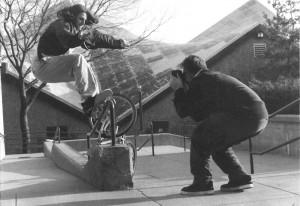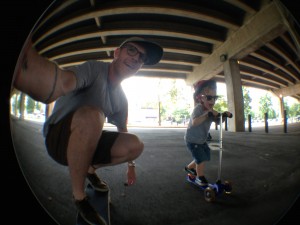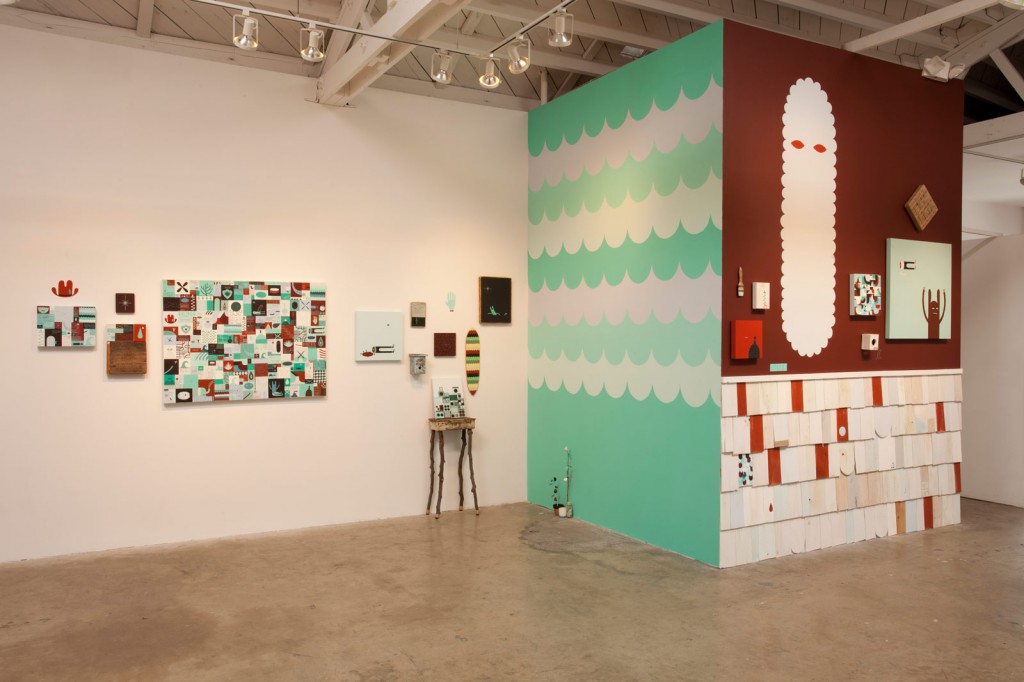Jim Houser and I go way back to high school days. We pushed wood long before either of us had any idea where our paths might lead or how art making and design would continue to merge our lives. I’m lucky that we lived so close back then. Even luckier that he moved to Providence, Rhode Island when I was starting GoodAndEvil and x3 lucky that he did graphics for me way back when. Jim continues to inspire.
When did you start skating?
In the spring of 1984. I learned on a friend’s Mattel Sizzler. In august of 84 I got my first real board for my 11th birthday.
What was your first skateboard?
A Nash Executioner, yellow with pink hardware.
When did you stop or slow down significantly?
In 2009, I had hip surgery that laid me up for quite a while. Before that, I had been pushing around still–at least once a week. I didn’t skate at all after the surgery, for about two years.
What do you do for a living?
I paint paintings and draw things on the computer for money.
When you are not skating, how often do you think about skateboarding?
At least once a day. I’ll see spots when I’m out and about, or I hear somebody skate past my house almost everyday.
How did skateboarding affect the direction of your life?
Most of the lasting bonds I’ve formed with people over the last 30 years were directly or indirectly related to to skateboarding. Before being a husband, before being a father, even before being an artist, I self-defined as a skateboarder. It ultimately ended up destroying my body, but I wouldn’t trade my place in it for anything. One of the things about my artwork that i am most proud of is that the skateboard graphics I have done which have given me my tiny piece in the story of skateboarding.
What is the connection between skateboarding and creativity?
It’s the root of skateboarding. The act of skating changes the way that you view your surroundings, in a very permanent way. I’m more often shocked to find a person who rides a skateboard who doesn’t also practice some other creative discipline. From the outside, I think that it can appear almost violently physical, but it actually possesses that same meditative repetition found in more traditional art forms.
More about Jim Houser
Jim Houser.com, Jim Houser on Jonathan LeVine Gallery


